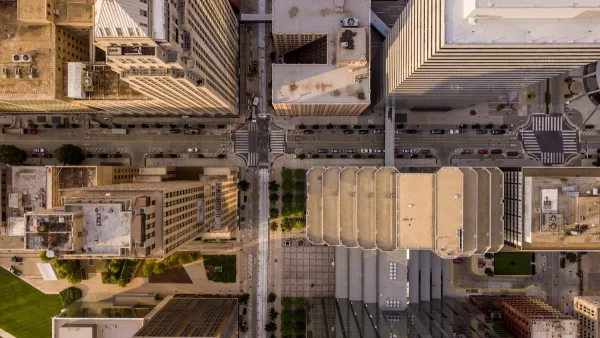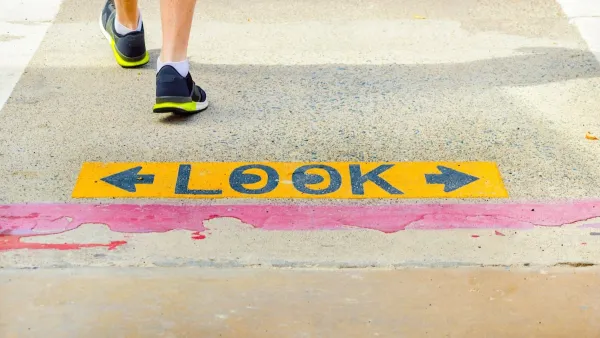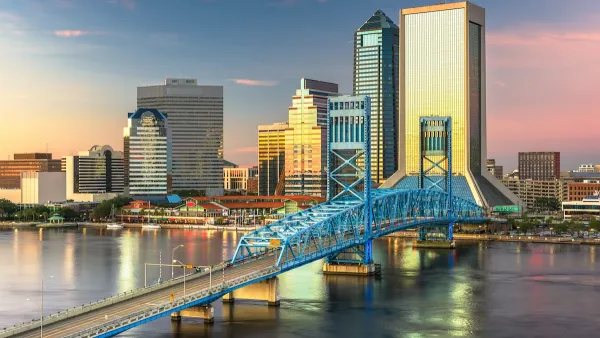With many states witnessing a rise in pedestrian fatalities, David M Nelson asks: "Where is the public outcry to improve safety?" With pedestrians often blamed for such incidents, he argues new laws dealing with pedestrian-vehicle crashes are needed.
Why is it that defensless pedestrians are often the first to be blamed for collisions with vehicles? As Nelson explains, this hasn't always been the case. "In the early 1900s, cars and their drivers were depicted in editorials, cartoons and accident reports as reckless murderers....What changed, mid-century, was that the highway lobby essentially took over the reporting of pedestrian and cyclists harmed by drivers; unsurprisingly, they changed the voice of coverage to presume the innocence of drivers."
Nelson spreads the blame to the American legal system which includes "few laws motivate law enforcement to consider killing a pedestrian as a crime."
Lastly, he points a finger at the media for their portrayal of such incidents. "First and foremost, underlying all of the poor media coverage is what I call the 'Accident Axiom.' This is the widely-held (but almost never-question) belief that accidents are an unavoidable and innocent consequence of modern motorized society. The assumption here is that crashes not involving excessive speed, alcohol, or gross negligence are presumably the fault of no one, but an unfortunate systemic fluke."
"This axiom has two corollaries: the Inherent Risk Corollary and the Reckless Driver Corollary. The former states that in this world of unavoidable accidents, pedestrians and cyclists are senselessly putting themselves in harm’s way by traversing concrete and asphalt. If they get hit, it is a deserved consequence of their poor decision making. And the latter states that those rare instances when a driver is at fault, it is the result of that driver being a reckless and careless individual, a deviant member of society. All blame is attributed to the individuals involved. The road network and driving culture are given immunity."
Solutions to this conundrum include: getting a Vulnerable Users Law introduced into your state legislature, lowering the speed of traffic, and convincing media outlets to change the way they report on pedestrian deaths.
FULL STORY: Walking is Not a Crime: Questioning the Accident Axiom

Analysis: Cybertruck Fatality Rate Far Exceeds That of Ford Pinto
The Tesla Cybertruck was recalled seven times last year.

National Parks Layoffs Will Cause Communities to Lose Billions
Thousands of essential park workers were laid off this week, just before the busy spring break season.

Retro-silient?: America’s First “Eco-burb,” The Woodlands Turns 50
A master-planned community north of Houston offers lessons on green infrastructure and resilient design, but falls short of its founder’s lofty affordability and walkability goals.

Test News Post 1
This is a summary

Analysis: Cybertruck Fatality Rate Far Exceeds That of Ford Pinto
The Tesla Cybertruck was recalled seven times last year.

Test News Headline 46
Test for the image on the front page.
Urban Design for Planners 1: Software Tools
This six-course series explores essential urban design concepts using open source software and equips planners with the tools they need to participate fully in the urban design process.
Planning for Universal Design
Learn the tools for implementing Universal Design in planning regulations.
EMC Planning Group, Inc.
Planetizen
Planetizen
Mpact (formerly Rail~Volution)
Great Falls Development Authority, Inc.
HUDs Office of Policy Development and Research
NYU Wagner Graduate School of Public Service




























